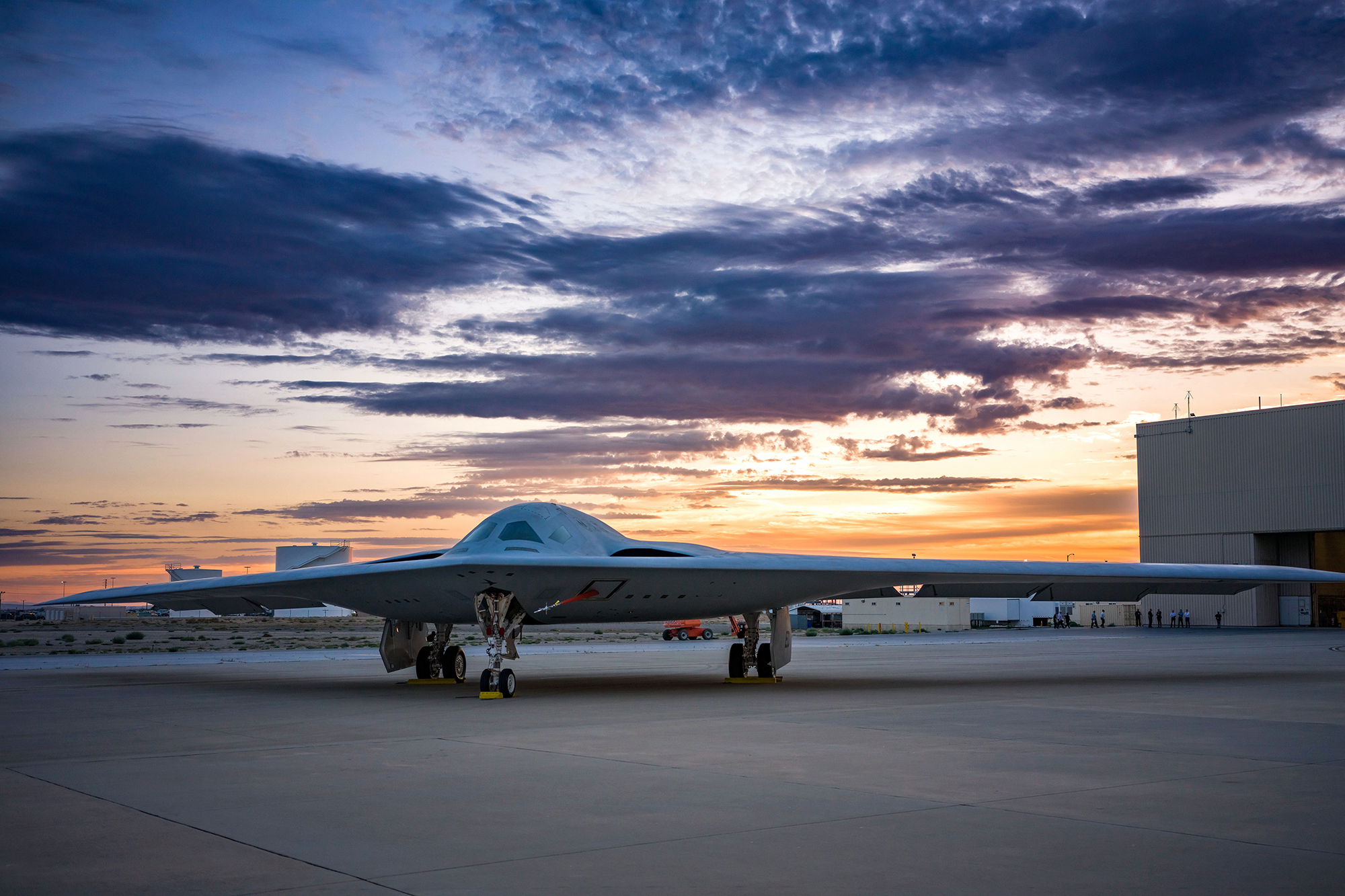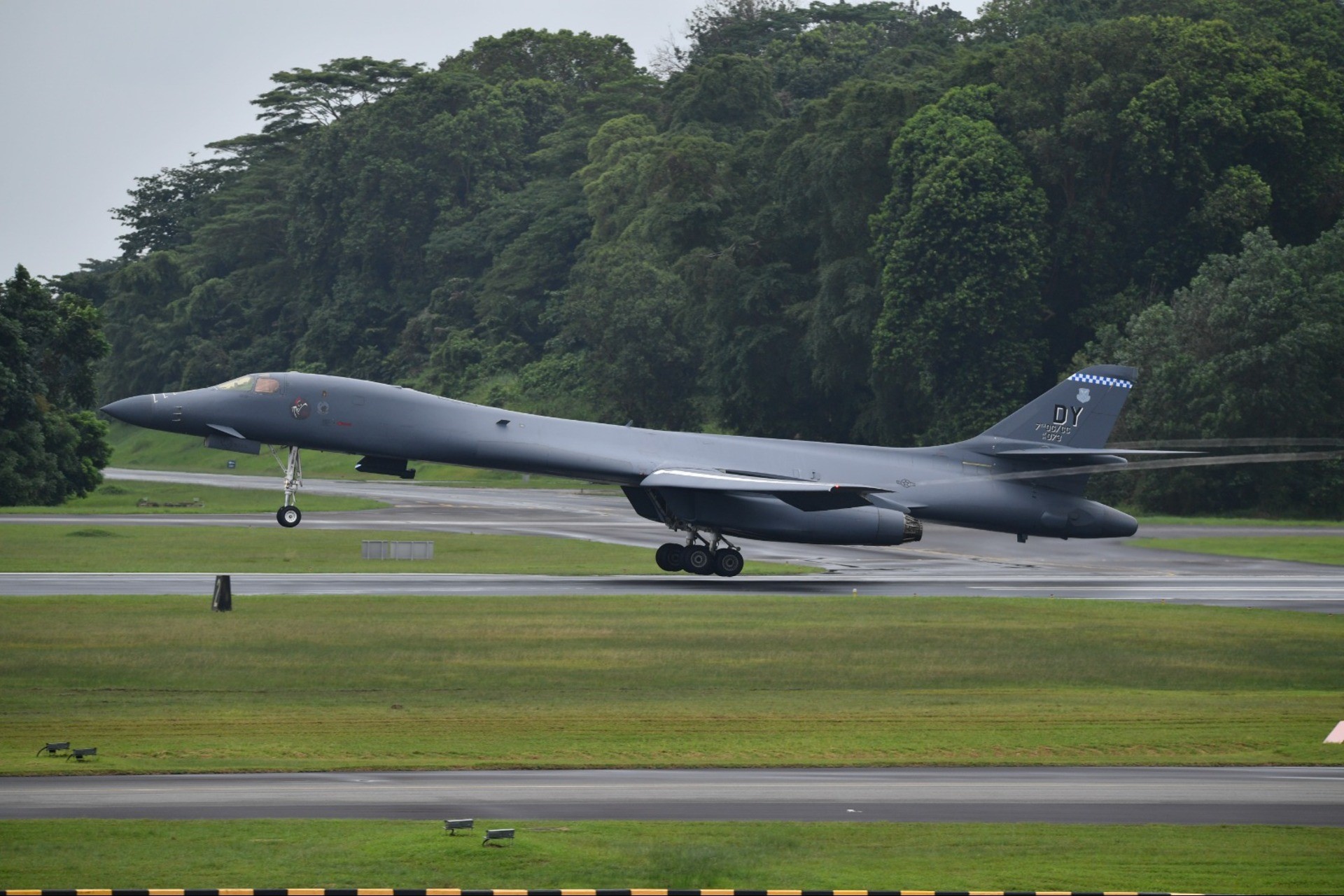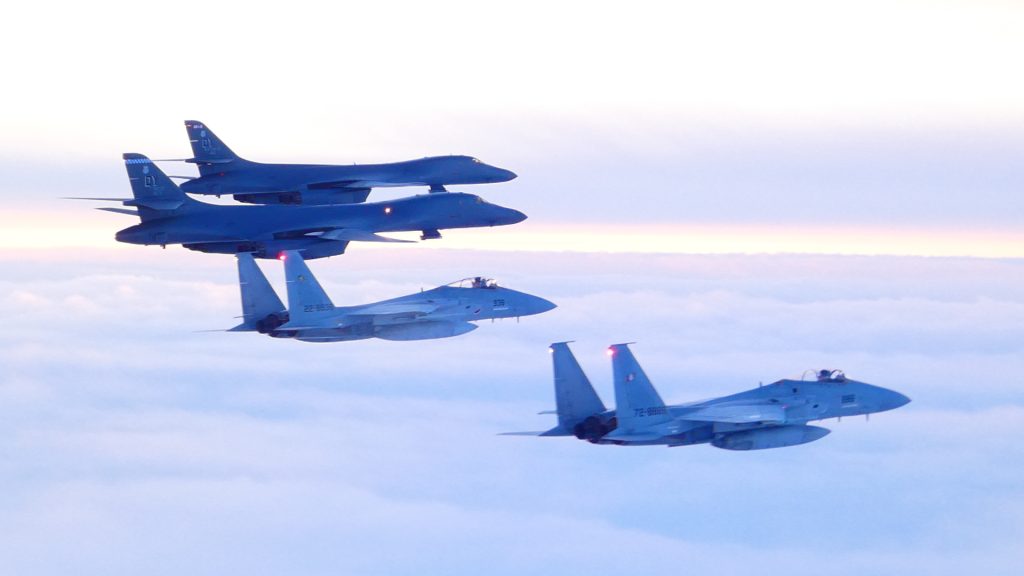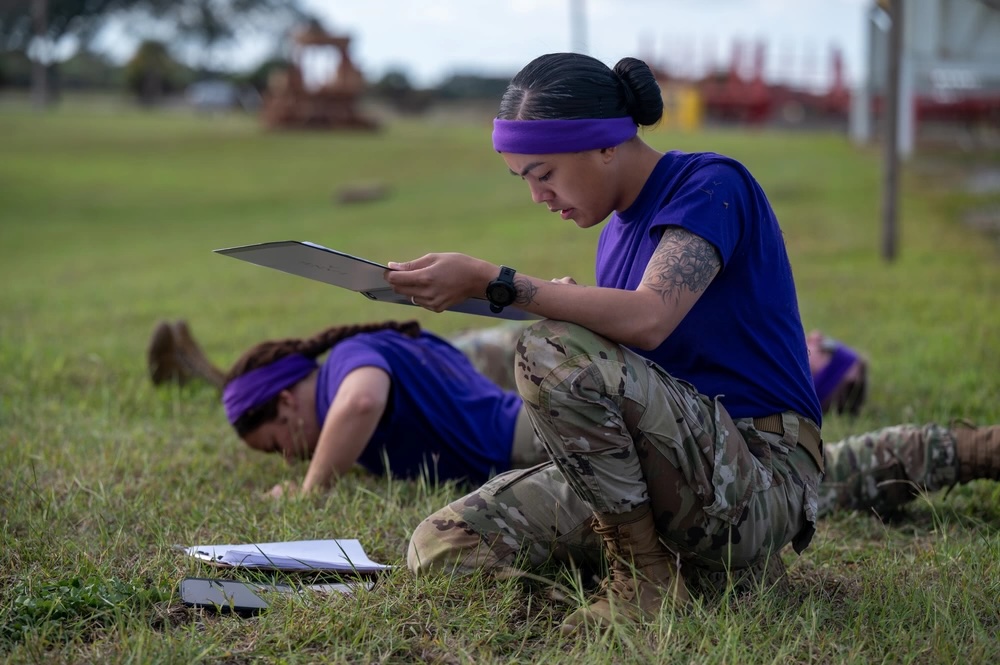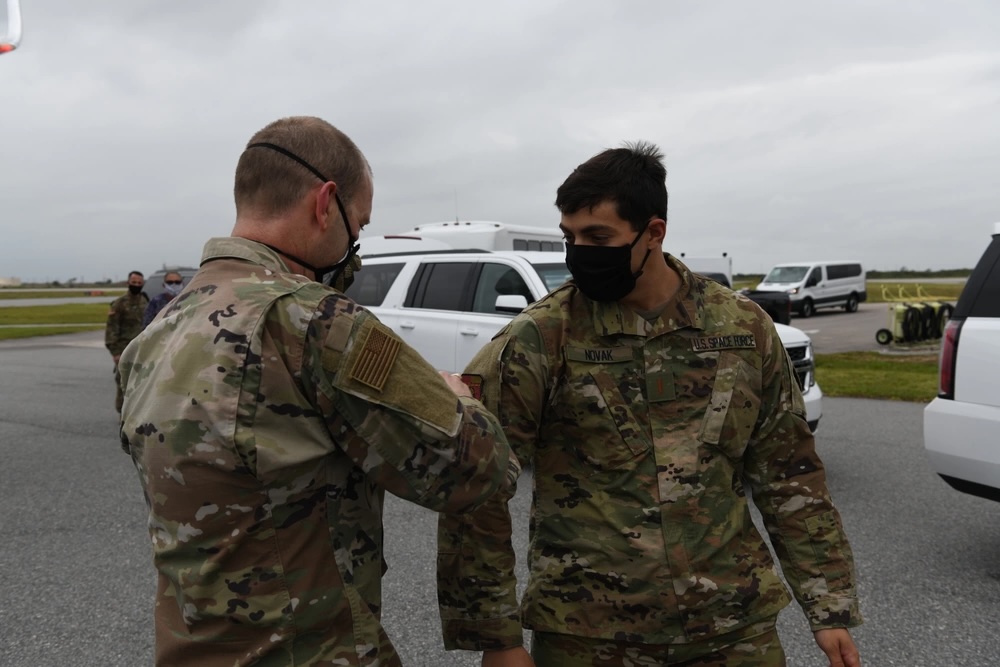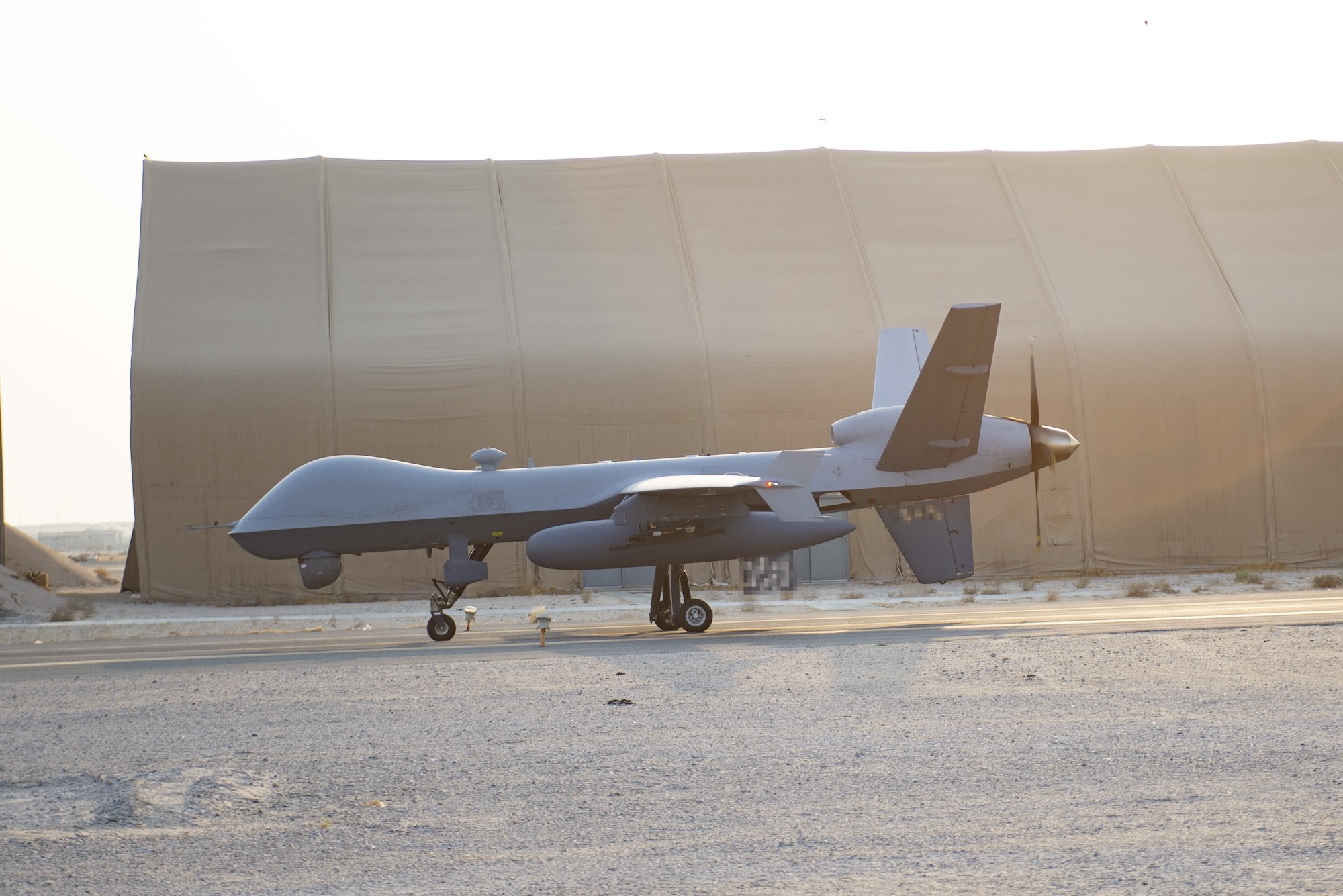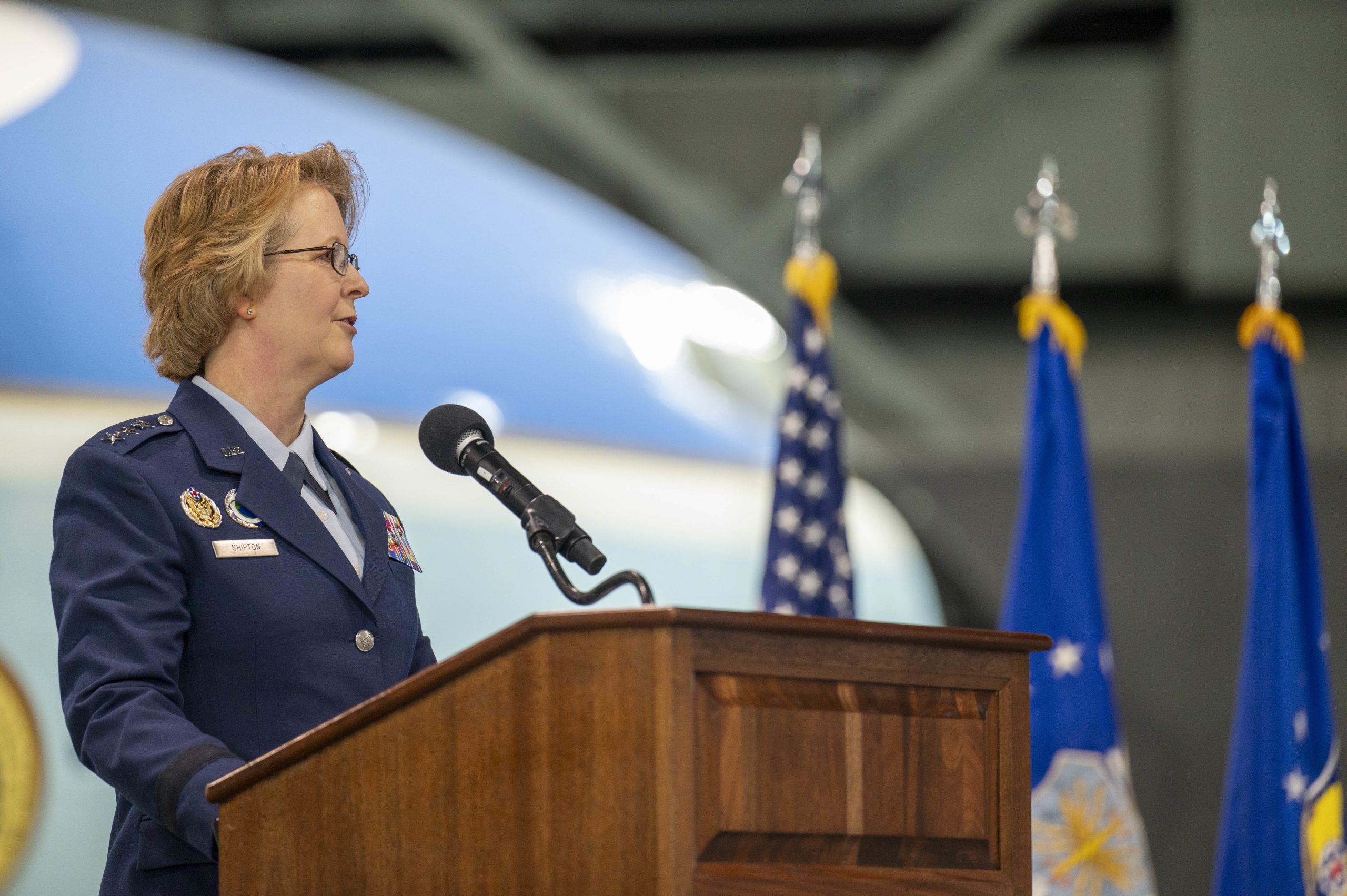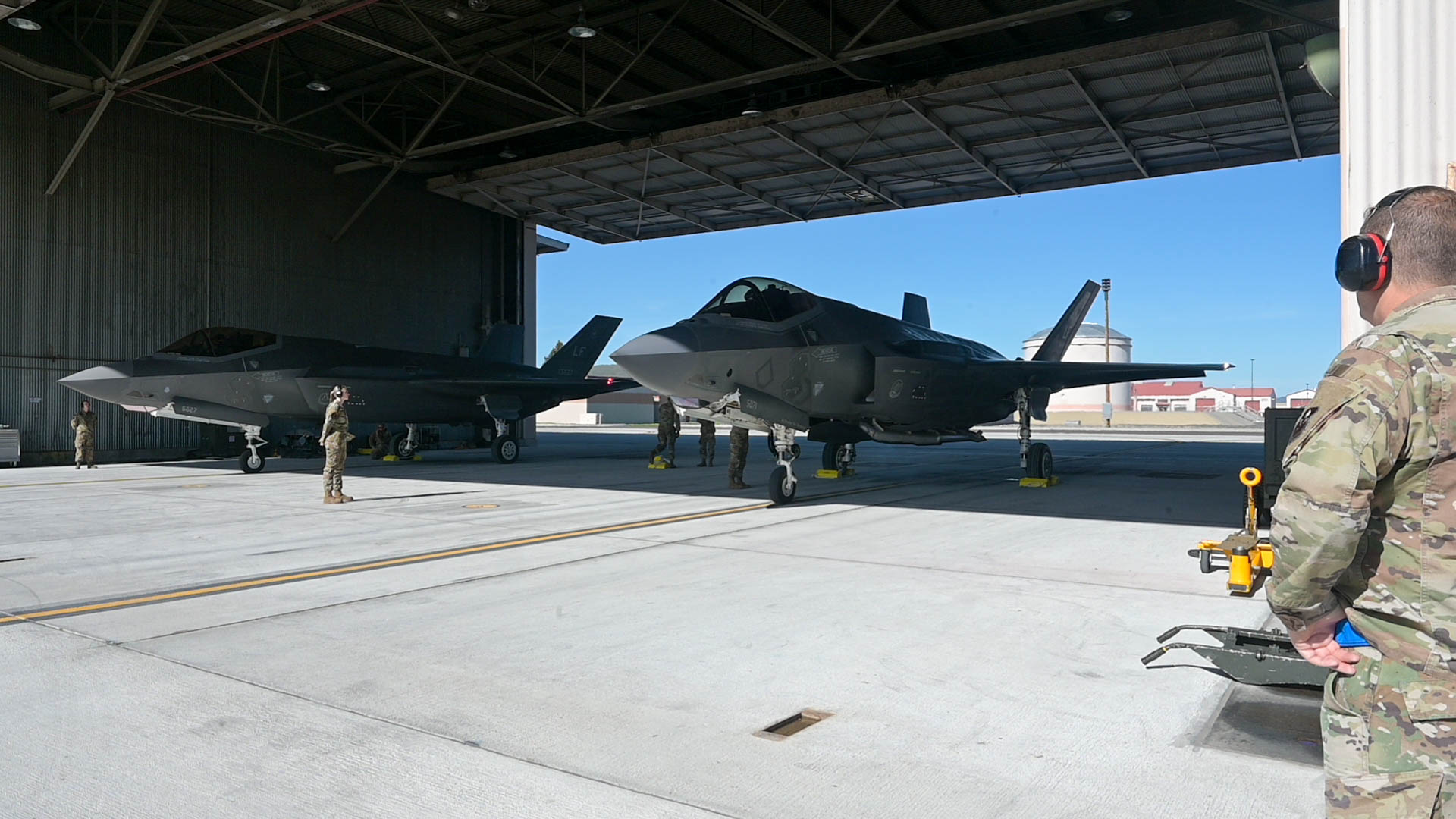Northrop Grumman has been awarded the low-rate initial production contract for the B-21 bomber, close on the heels of the airplane making its first flights, according to William LaPlante, undersecretary of defense for acquisition and sustainment.
“This past fall, based on the results of ground and flight tests and the team’s mature plans for manufacturing, I gave the go-ahead to begin producing B-21s at a low rate,” LaPlante said in a statement to Air & Space Forces Magazine.
“Production of the B-21 ‘Raider’ stealth bomber is moving forward,” he said. “One of the key attributes of this program has been designing for production from the start—and at scale—to provide a credible deterrent to adversaries. If you don’t produce and field to warfighters at scale, the capability doesn’t really matter,” LaPlante said.
The Pentagon did not supply the contract amount, the number of aircraft it covers, or the exact date it was awarded, but LaPlante’s statement indicates it was before the end of 2023.
Asked for comment, Northrop confirmed LaPlante’s action, saying “Our team received the contract award after B-21 entered flight testing within the program baseline schedule.” The test aircraft has shown the B-21’s “readiness for production, achieving all flight performance and data requirements.”
The company described the B-21 as “the world’s first six-generation aircraft,” which delivers “a new era of capability and flexibility through advanced integration of data, sensors and weapons, and is rapidly upgradable to outpace evolving threats.”
One of the key milestones necessary for Northrop to receive the contract was first flight, which was achieved Nov. 10.
Northrop will hold its 2023 fourth quarter earnings call on Jan. 25; the value of the contract may be discussed in that venue.
A spokesperson for LaPlante noted that the B-21 will replace the B-1B and B-2A to provide strategic deterrence and is “expected to enter service in the mid-2020s, with a production goal of a minimum of 100 aircraft.” The program is being managed by the Air Force Rapid Capabilities Office rather than the usual path under the Air Force Life Cycle Management Center, which “puts the bomber on a faster track than previous fielding of new aircraft,” the spokesperson said.
The RCO’s strategy “includes building test aircraft as production-representative as possible,” he said. “Rather than a traditional flight prototype approach, B-21 test aircraft are built including mission systems using the same manufacturing processes and tooling for production aircraft. This approach in development laid the groundwork for production to start more quickly.”
In partnership with Northrop, “the Air Force also invested in a digital ecosystem for the B-21 throughout the aircraft’s lifecycle. The engineering and manufacturing data used on the production line will be delivered with the aircraft and combined with modern collaboration and maintenance tools to make the B-21 affordable to buy, fly, and sustain, at scale,” he said.
Until last week, the Air Force declined to say whether the contract had been awarded, or even if the bomber had flown a second time. However, the service acknowledged that the first B-21, nicknamed “Cerberus,” flew on Jan. 17, but withheld any other details.
“I can confirm” the B-21 flew on Jan. 17, a USAF spokesperson said. “For operational reasons, we are not providing further details related to the test program, to include the number of flights the aircraft has flown.”
The flight test campaign is being managed “by the Air Force Test Center and 412th Test Wing’s B-21 Combined Test Force” to provide “survivable, long-range, penetrating strike capabilities to deter aggression and strategic attacks against the United States, allies, and partners,” the USAF spokesperson added.
Pentagon officials say the blackout on the B-21’s progress comes at the direction of Defense Secretary Lloyd Austin, who specifically enjoined the Air Force and Global Strike Command from making a media event out of the B-21’s first flight. Some officials have said Austin is concerned about revealing details from which China could glean information about the airplane, while others have said he simply wants the program to keep a low profile, potentially because of its high cost.
Cerberus rolled out of Northrop’s hangars at Air Force Plant 42 in Palmdale, Calif. in December 2022, in a gala event before VIPs and media, but the viewing was tightly controlled to prevent photography of the airplane from any angle but directly ahead. Rolling it out in darkness also helped conceal some of the design details, more of which have only surfaced since the aircraft began outside engine runs and taxi tests starting last fall.
Beyond acknowledging that the aircraft did in fact fly Nov. 10 to Edwards Air Force Base, Calif., the Air Force has declined to provide any information or photographs of that event. The historic flight marked the first time a new Air Force bomber has taken to the skies since the B-2 Spirit made its first hop, also from Palmdale to Edwards, in July 1989.
Views of the first flight confirmed the kite-like planform of the aircraft, the general arrangement of its bomb and engine bays, the shaping of its exhausts and the positioning of auxiliary air inlets, as well as the name “Cerberus” stenciled on gear doors.
The only imagery available of the B-21’s first flight was taken by private photographers camped out at the end of the Plant 42 runway, where Northrop is assembling the B-21. They had been waiting there for some days, because service and company officials had said the airplane would fly by the end of last year.
The B-21 is likely carrying out the typical initial test activities of modern military aircraft: an exploration of basic flying and handling qualities, flutter, engine performance and verification of the extensive communications and telemetry needed to collect flight test data. These data are being carefully evaluated to ensure that predictions made by Northrop’s digital design and manufacturing systems match actual performance. The Air Force hopes to abbreviate B-21 testing—and some test cost—by skipping some envelope confirmation work if benchmark test points closely match predictions. That approach has been taken before—notably on the F-35, where it proved unsuccessful—but industry experts say modern digital methods are far more advanced, and provide extremely high fidelity predictions of aircraft performance.
Before its first flight, Cerberus was fitted with an air data probe extending forward of the aircraft from the port side, as well as a trailing air data cable behind the aircraft, in direct line with the forward probe. Operationally, the B-21 won’t have any such protuberances, so as not to affect its radar cross section and other stealth qualities.
The Air Force has not said how long the B-21 will be in flight test or when it’s expected to achieve initial operational capability, other the ambiguous “mid-2020s.” However, the service has acknowledged that five more aircraft are in some stage of construction at Plant 42, and that at least five of the six B-21s will be dedicated to test activities. After developmental and operational testing is complete, those aircraft will have their test instrumentation removed and be modified into operational bombers.
The first B-21 operational base will be Ellsworth Air Force Base, S.D., where military construction on three dozen projects to prepare for the new bomber’s arrival has been underway for several years.
Given the Pentagon’s reticence about divulging B-21 information, it’s unlikely that the second example of the B-21 will be rolled out to any fanfare, and will only be revealed by photographers who happen to catch it preparing to fly from Palmdale.
